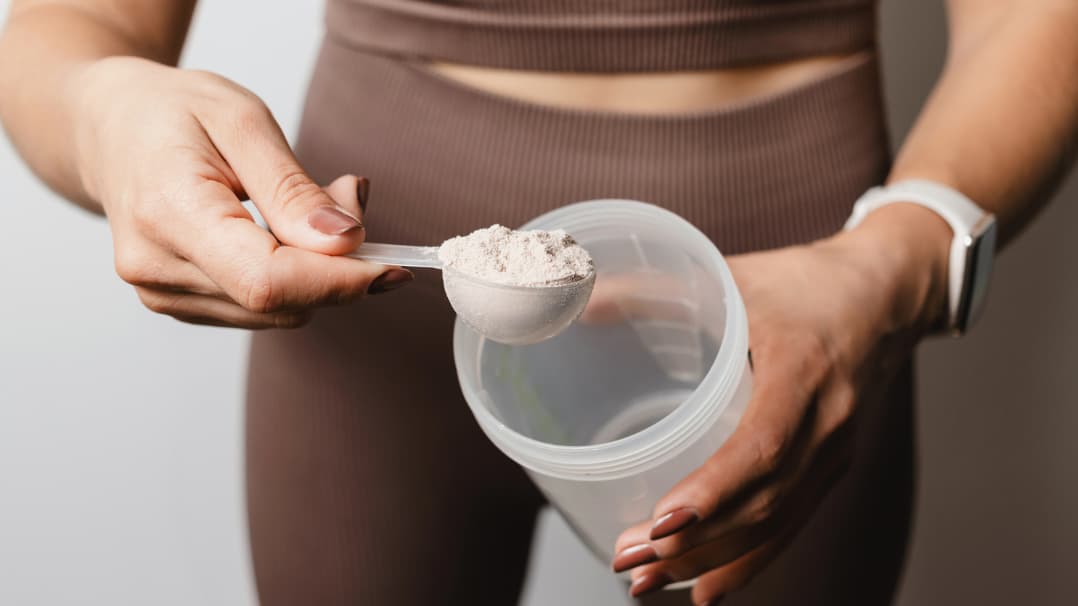Sauna bathing is a form of passive heat therapy characterized by exposure to high environmental temperature for a brief period of time. In recent decades, sauna use has become a popular wellness practice. But saunas have actually been around for a long time: it is an ancient tradition dating back thousands of years.
Saunas originated in Finland during the late Stone Age and have been part of Finnish culture ever since. Early saunas were simple pits in the ground filled with heated stones believed to be used primarily for warmth but also for social gatherings and possibly religious rituals.
Modern-day saunas remain a central element of Finnish culture, essential for physical and mental health and well-being. But now the rest of the world has finally caught up. And so has research—several studies have explored the benefits of sauna therapy for human health and the mechanisms of sauna’s health benefits. In this article, we’ll learn what they have to say.
Sauna Benefits
Sauna bathing is a relaxing activity, but a lot happens in your body while you’re at it. Sauna increases body temperature, which diverts blood flow from internal organs to the skin, to help dissipate heat, and increases heart rate and cardiac output; sweating also increases to cool down the body, while blood pressure is reduced; muscle blood flow may also increase to some extent [1–3]. These types of responses are actually similar to those produced by moderate or vigorous walking [4].
Sauna would be worth it simply for the pleasure and relaxation it provides as a recreational activity, but research suggests that sauna may be good for you in many other ways. Here are some of the health benefits of sauna:
- Supports heart health and longevity (PubMed: 25705824)
- Supports healthy blood pressure and vascular function (PubMed: 29269746)
- Supports cerebral blood flow (PubMed: 29720543)
- Supports mental well-being (PubMed: 39446139)
- Enhances the benefits of exercise of cardiovascular fitness (PubMed: 35785965)
- Supports exercise performance (PubMed: 16877041)
How Does Sauna Benefit Health?
Sauna use, or sauna bathing, is characterized by a short exposure to high temperatures. This exposure causes mild hyperthermia, which is a form of heat stress that triggers a thermoregulatory response in the body. The stress response involves cardiovascular and metabolic adaptations, hormonal changes, stimulation of the sympathetic nervous system, and cellular protective mechanisms that work together to restore and maintain homeostasis [1].
This mild stress response may promote adaptations that are beneficial in the long term: they optimize the body's response to future heat stress exposure, which results in an acclimation of the body to heat but also in enhanced physiological resilience. This type of adaptive response results from a biological process known as hormesis.
Hormesis (or hormetic response) is a biological dose-effect response in which compounds or biological stressors that are detrimental at high amounts can be beneficial at a milder exposure [5]. Hormesis is a survival-enhancing mechanism that activates cellular stress response pathways to protect cells from the cause of stress and that promotes biological adaptation to stressors to make the organism more resilient to future exposures to the stressor; therefore, it promotes long-term stress resistance [5,6].
Hormesis is one of the reasons why mild biological stress may support healthspan and longevity, as has been repeatedly shown by research [7,8]. Heat stress has been linked to several adaptive changes that have been associated with a lower biological age, including supporting mitochondrial health, protein quality control, and autophagy [9–11]. Therefore, sauna may be a simple and pleasurable strategy to help you slow down the aging process at the cellular level.
What Sauna Studies Show
In a recent Swedish observational study assessing the benefits of sauna, sauna users reported higher levels of happiness and energy, more satisfying sleep patterns, and better general and mental health. Using sauna 1–4 times/month was sufficient to get the most benefits for mental wellbeing and showed similar benefits to use of saunas 2-7 times/week [12].
A Finnish observational study followed for a median of 20.7 years a cohort of 2315 men aged 42-60 years at baseline who were regular sauna users. The study found that sauna use can significantly support cardiovascular health and longevity. The longevity benefits of sauna increased the more frequent and longer the sessions were, with the best outcomes observed for those who used the sauna 4–7 times a week and for sessions lasting at least 19 minutes [13].
Another study with the same Finnish cohort also found that sauna may support cognitive health in the long term, with significantly better outcomes being observed for men who had 4 to 7 sauna sessions per week relative to those who had only 1 session/week [14].
Another long-term observational study that followed a cohort of 1935 men aged 42-61 years for a median follow-up of 25.6 years found that moderate (2-3 sessions/week) to high (4-7 sessions/week) frequency sauna bathing was associated with better respiratory health [15].
It is well known that exercise is one of the best strategies to support health and longevity. What you may not know is that adding sauna may make it even better. A study that compared the effects of exercise followed by a sauna session to those of exercise alone found that sauna enhanced the cardiovascular effects of exercise. Physically inactive adults who exercised for 8 weeks showed a 9% increase in estimated VO₂max, a measure of cardiovascular fitness; those who added a 15-minute sauna session post-workout showed a 21% increase in estimated VO₂max, indicating that sauna boosted the benefits of exercise on cardiovascular fitness [16].
By supporting the cardiovascular benefits of exercise, sauna use may also support exercise performance. In another study, male competitive distance runners and triathletes were asked to use saunas for 30 minutes immediately after training for 3 weeks. Adding the post-workout sauna resulted in an improvement in the time to exhaustion on a treadmill run by 32%, which was correlated to increased blood volume [17].
Sauna may also support health and quality of life in old age. A study with 524 Finnish octogenarians reported that physical function, vitality, social functioning, and general health were considerably better in sauna users than in non-users [18].
Overall, research shows that sauna is a pleasant and simple way to support physical and mental wellness. It’s both relaxing and energizing, it improves your workouts, it supports cardiovascular health, and it may help you live a long, healthy life [19]. Based on available research, using a sauna at least every other day for about 20 minutes may be a beneficial strategy to support cardiovascular, respiratory, and cognitive health, as well as longevity. But even using the sauna just once a week can make you feel happier and more energized, which is already a significant benefit.
References
[1]J.A. Laukkanen, T. Laukkanen, S.K. Kunutsor, Mayo Clin. Proc. 93 (2018) 1111–1121.
[2]I. Heinonen, R.M. Brothers, J. Kemppainen, J. Knuuti, K.K. Kalliokoski, C.G. Crandall, J. Appl. Physiol. 111 (2011) 818–824.
[3]C.G. Crandall, T.E. Wilson, J. Marving, T.W. Vogelsang, A. Kjaer, B. Hesse, N.H. Secher, J. Physiol. 586 (2008) 293–301.
[4]I. Vuori, Ann. Clin. Res. 20 (1988) 249–256.
[5]E.J. Calabrese, G. Dhawan, R. Kapoor, I. Iavicoli, V. Calabrese, Biogerontology 16 (2015) 693–707.
[6]E.J. Calabrese, K.A. Bachmann, A.J. Bailer, P.M. Bolger, J. Borak, L. Cai, N. Cedergreen, M.G. Cherian, C.C. Chiueh, T.W. Clarkson, R.R. Cook, D.M. Diamond, D.J. Doolittle, M.A. Dorato, S.O. Duke, L. Feinendegen, D.E. Gardner, R.W. Hart, K.L. Hastings, A.W. Hayes, G.R. Hoffmann, J.A. Ives, Z. Jaworowski, T.E. Johnson, W.B. Jonas, N.E. Kaminski, J.G. Keller, J.E. Klaunig, T.B. Knudsen, W.J. Kozumbo, T. Lettieri, S.-Z. Liu, A. Maisseu, K.I. Maynard, E.J. Masoro, R.O. McClellan, H.M. Mehendale, C. Mothersill, D.B. Newlin, H.N. Nigg, F.W. Oehme, R.F. Phalen, M.A. Philbert, S.I.S. Rattan, J.E. Riviere, J. Rodricks, R.M. Sapolsky, B.R. Scott, C. Seymour, D.A. Sinclair, J. Smith-Sonneborn, E.T. Snow, L. Spear, D.E. Stevenson, Y. Thomas, M. Tubiana, G.M. Williams, M.P. Mattson, Toxicol. Appl. Pharmacol. 222 (2007) 122–128.
[7]N. Minois, Biogerontology 1 (2000) 15–29.
[8]F.Z. Marques, M.A. Markus, B.J. Morris, Dose Response 8 (2009) 28–33.
[9]P.S. Hafen, C.N. Preece, J.R. Sorensen, C.R. Hancock, R.D. Hyldahl, J. Appl. Physiol. 125 (2018) 1447–1455.
[10]S. Lindquist, Annu. Rev. Biochem. 55 (1986) 1151–1191.
[11]K. Dokladny, O.B. Myers, P.L. Moseley, Autophagy 11 (2015) 200–213.
[12]Å. Engström, H. Hägglund, E. Lee, M. Wennberg, S. Söderberg, M. Andersson, Int. J. Circumpolar Health 83 (2024) 2419698.
[13]T. Laukkanen, H. Khan, F. Zaccardi, J.A. Laukkanen, JAMA Intern. Med. 175 (2015) 542–548.
[14]T. Laukkanen, S. Kunutsor, J. Kauhanen, J.A. Laukkanen, Age Ageing 46 (2017) 245–249.
[15]S.K. Kunutsor, T. Laukkanen, J.A. Laukkanen, Eur. J. Epidemiol. 32 (2017) 1107–1111.
[16]E. Lee, I. Kolunsarka, J. Kostensalo, J.P. Ahtiainen, E.A. Haapala, P. Willeit, S.K. Kunutsor, J.A. Laukkanen, Am. J. Physiol. Regul. Integr. Comp. Physiol. 323 (2022) R289–R299.
[17]G.S.M. Scoon, W.G. Hopkins, S. Mayhew, J.D. Cotter, J. Sci. Med. Sport 10 (2007) 259–262.
[18]T.E. Strandberg, A. Strandberg, K. Pitkälä, A. Benetos, Aging Clin. Exp. Res. 30 (2018) 1053–1057.
[19]R.P. Patrick, T.L. Johnson, Exp. Gerontol. 154 (2021) 111509.








No Comments Yet
Sign in or Register to Comment